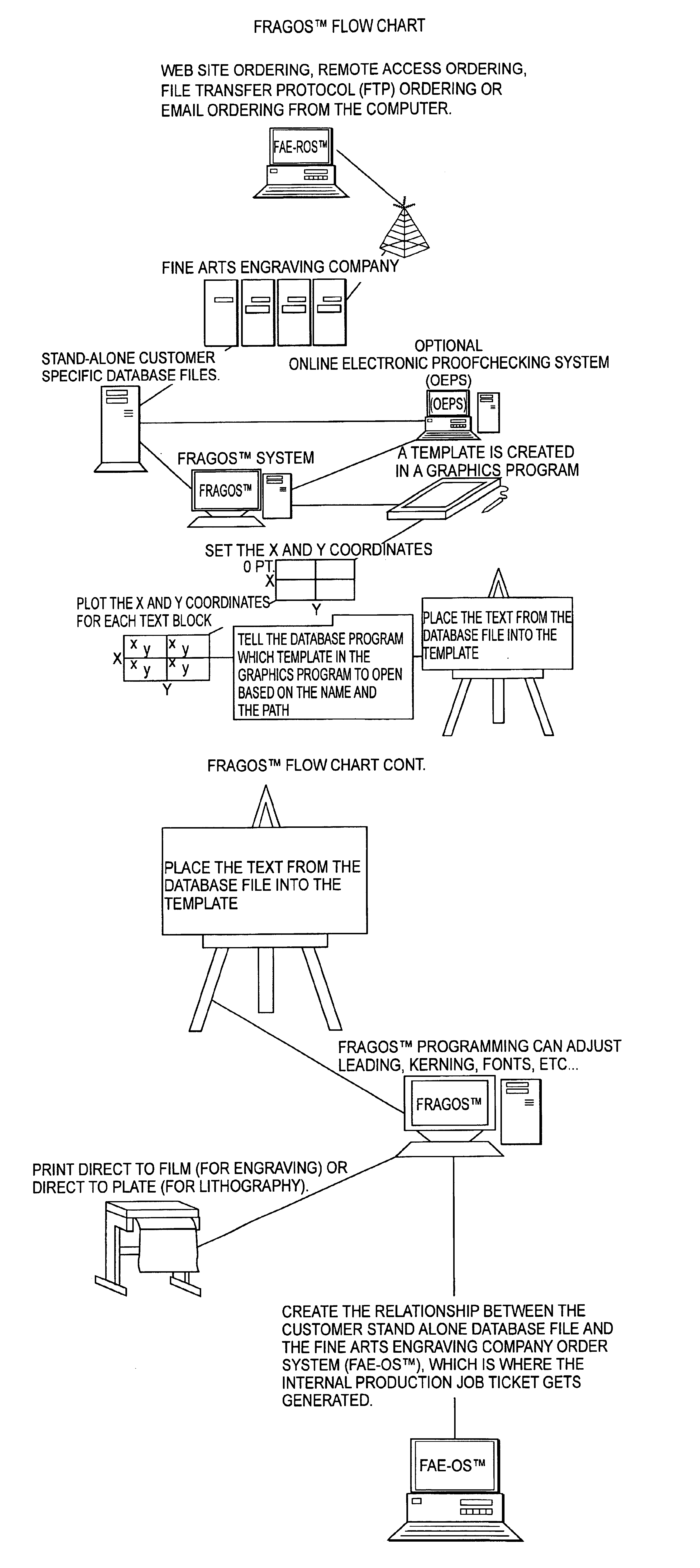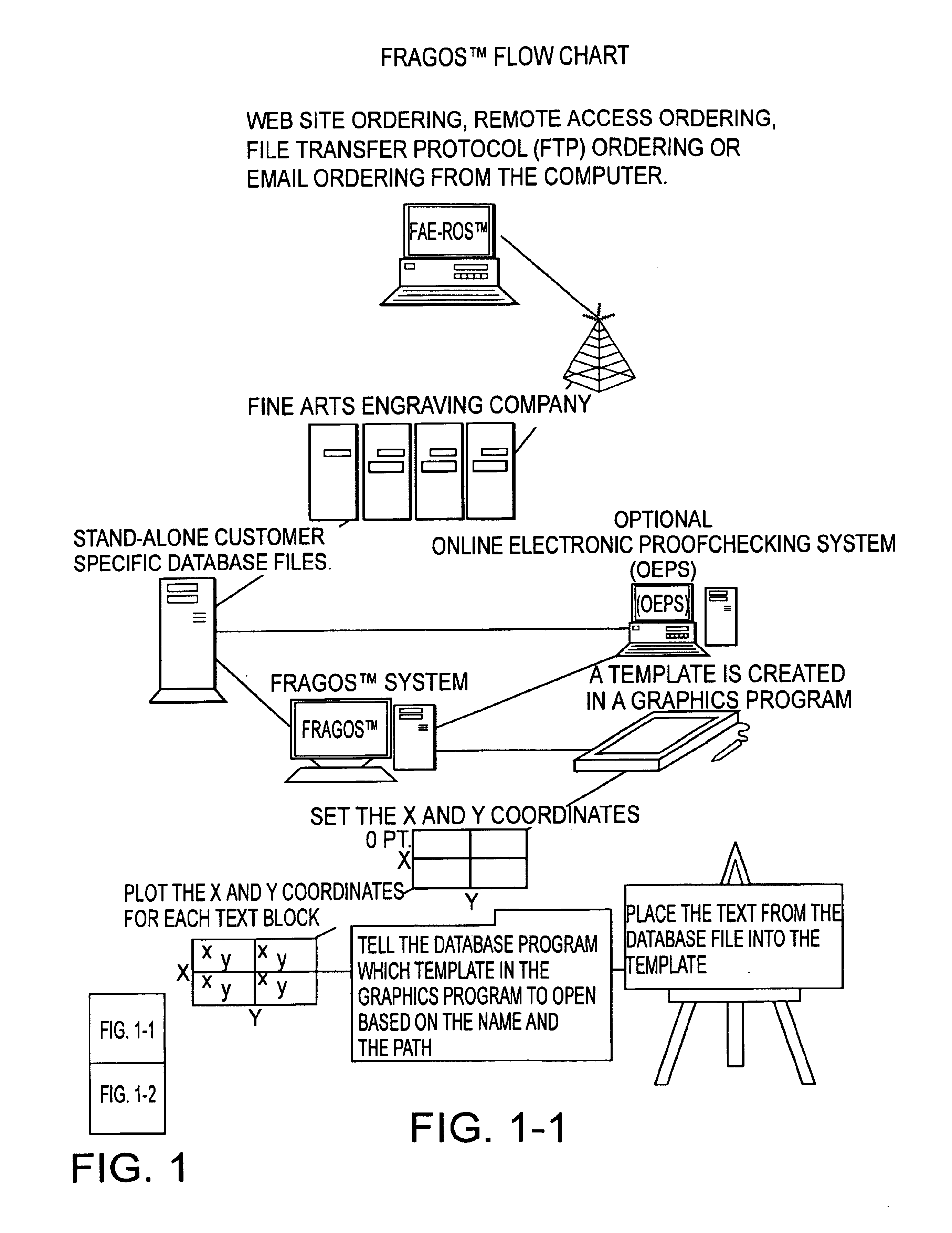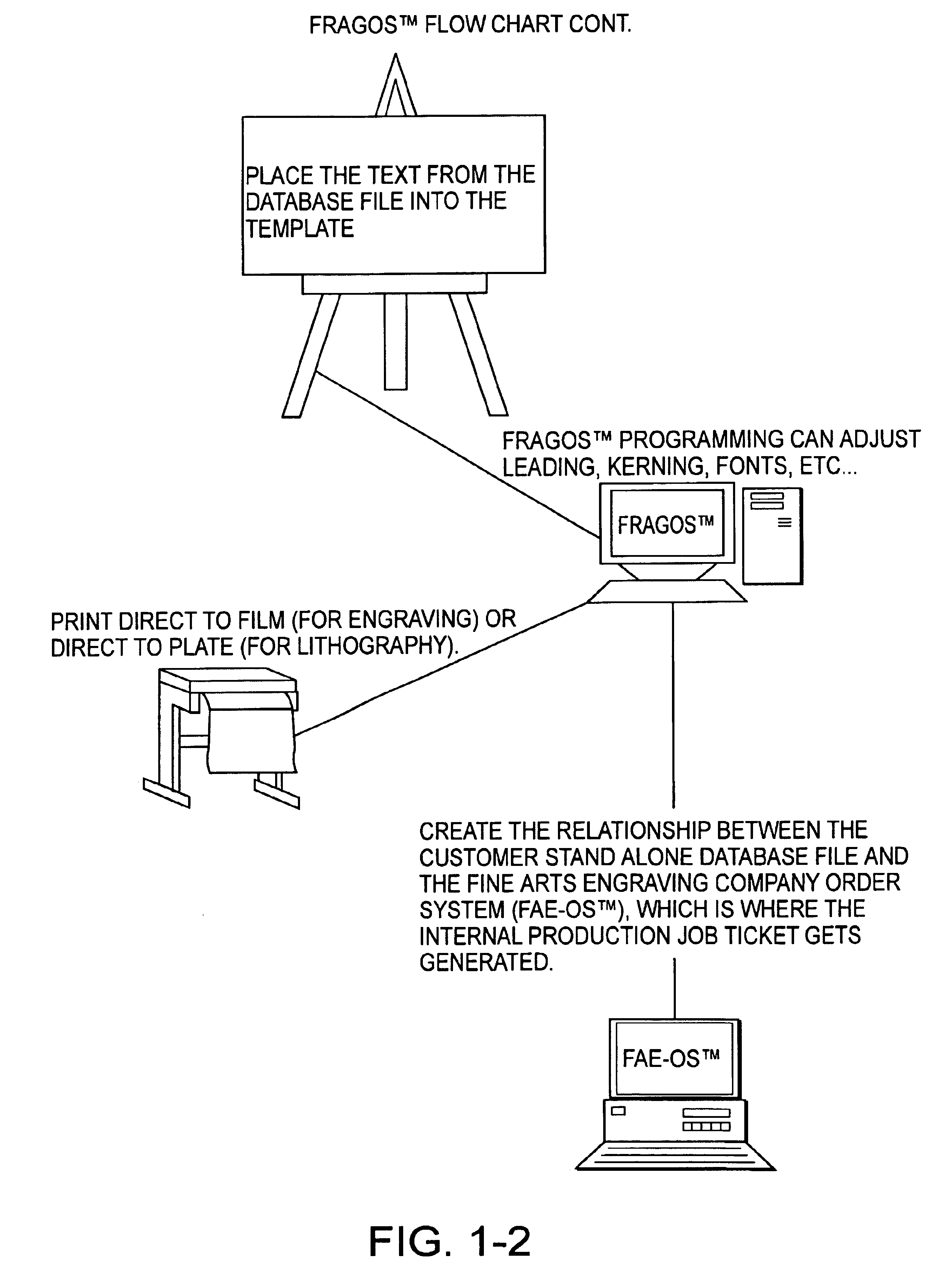Automated typesetting system
a typesetting system and typesetting technology, applied in the field of layout and typesetting, can solve the problems of requiring proofing, supervision, and human design, layout and typesetting expertise, and many time-consuming steps to produce an acceptable and accurate final product, so as to improve order processing efficiency, reduce commercial printing order turnaround time, and increase productivity
- Summary
- Abstract
- Description
- Claims
- Application Information
AI Technical Summary
Benefits of technology
Problems solved by technology
Method used
Image
Examples
Embodiment Construction
[0036]A portion of the disclosure of this patent document contains material which is subject to copyright protection. The copyright owner has no objection to facsimile reproduction by anyone of the patent document or the patent disclosure, as it appears in the Patent and Trademark Office patent files or records, but otherwise reserves all copyright rights whatsoever.
[0037]An outline of the preferred embodiment of the present invention is shown in FIG. 1. The preferred embodiment of the present invention operates on Apple Computer, Inc.'s Macintosh computer operating system, using Apple Computer's standard operating software (System 7 or newer) and a combination the off-the-shelf software packages FileMaker Pro by Apple Computer's Claris division and Adobe PageMaker by Adobe Systems Inc. FileMaker Pro and PageMaker may reside on the same physical computer, or may reside of different computers, connected together using traditional, prior art networking technology.
[0038]FileMaker Pro i...
PUM
 Login to View More
Login to View More Abstract
Description
Claims
Application Information
 Login to View More
Login to View More - R&D
- Intellectual Property
- Life Sciences
- Materials
- Tech Scout
- Unparalleled Data Quality
- Higher Quality Content
- 60% Fewer Hallucinations
Browse by: Latest US Patents, China's latest patents, Technical Efficacy Thesaurus, Application Domain, Technology Topic, Popular Technical Reports.
© 2025 PatSnap. All rights reserved.Legal|Privacy policy|Modern Slavery Act Transparency Statement|Sitemap|About US| Contact US: help@patsnap.com



